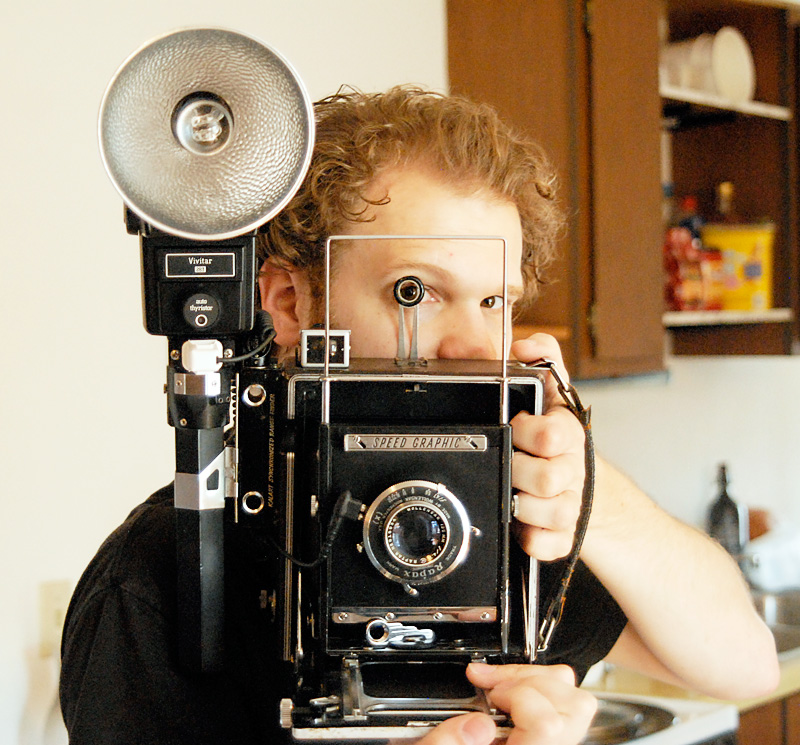Those are expensive tubes. I have Speedotron Blackline packs and still have 4800cx and 106 heads that have a single tube that takes the full 4800ws. The tubes get expensive if you break one.
One of the big complaints Ive had with strobes vs hot lights is the lack of fresnel spot lights. You almost have to have hot lights adapted. Speedotron addressed that and still make fresnel lights. I have one that I love that's an 8" fresnel based on a Strand-Century. It takes a full 4800 as in one tube. It's a really nice light that has a very unifor pattern from very tight to flood. I just picked up a nice Ascor fresnel focusing spot that had a short in the modeling lamp or fan circuit. It's off to Speedotron to be fixed. This little spot will take 800ws max.
I learned to light in the days of hot lights and still use hot lights and especially fresnels. You just have so much control and unlike LED lights the color is on the money. Speaking of LED's. I worked on a shoot recently where one of the assistants had just bout a new Arri sun soft light, WOW. Amazing color and versatility with constantly variable color from the warm side of tungsten to something like 20,000 kelvin. It'll run on a battery too and you can dial in about any color that Rosco offers in gells. The catch is it's dry heavy and with the AC power supply its right at $7,000 but it'll last a lifetime. Arri has similar features in their LED fresnels too. You could have a pretty nice lighting package for around $75,000:-(.
That's a lot cheaper than a comperable HMI package and a lot lighter and easier to use. No monsterous heavy ballasts and temperamental lights that won't strike an arc when hot. No heat too with LED's.
Speaking of big and heavy, in my hot light days I had a Mole Richardson Mighty Mole that was 10,000 watts. Imagine the amperage it pulled. I had 2 800 amp services in the studio. The beast must have weights 300 pounds and the fresnel lens was around 30" in diameter. I might be a touch off on size as it's been over 30 years since I had it. I also had 4 x 5,000 watt, 6 x 2,000 watt and quite a few 1,000's. Then there were 1,000 watt floods and smaller fresnels. I did quite a bit of motion picture work for commercials on 35mm film and then later video plus doing large room sets and products for stills. Big setups take a lot of light because tungsten film is quite slow (transparency film not negs).
With Ektachrome professional tungsten the film came with a data sheet that gave different ISO values for different exposure times and filter pack recommendations for each time to correct for reciprocity color shift. I always tested each batch and most often found their recommendations were off by quite a bit.
A 15 second exposure on tungsten chrome might result in an effective ISO of 15 with a filter pack of cc10 blue + c 7.5 magenta. Depending on the batch of film it could be anything. For example one batch might require that cc10B + cc7.5M at 15 sec and at 1 minute it might be ISO 8 with a cc5 green + cc10 cyan and another batch would be totally different.
When you're working with an ISO of 10 or 15 with filters and an aperture of f45 on your 19' (480mm) lens on 8x10 you need a huge amount of light. Imagine working with models and keeping them cool and looking fresh.
Daylight film and strobes made life much much easier. Daylight film didn't require CC filter packs to correct reciprocity color shift because the flash duration was very fast. There was no proble keeping talent cool and power requirements were much less. The trade off was the lack of fresnel lighting. Like I mentioned, Speedotron offers or offered 2 fresnel spots, an 8 and a 10 inch that will take 4800 ws in a single pop.

 Broncolor 606 Head by Nokton48, on Flickr
Broncolor 606 Head by Nokton48, on Flickr
